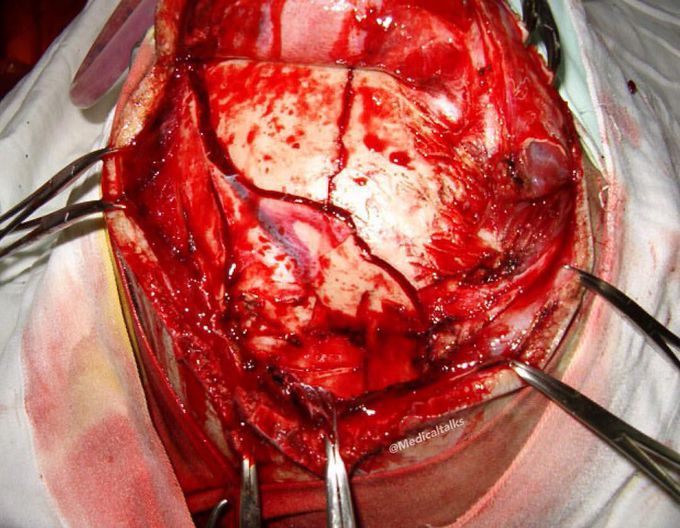


Patient with a complex open fracture of the skull after a motorcycle accident!
A fracture indicates that substantial force has been applied to the head and is likely to have damaged the cranial content. The kind of head trauma seen here is the combination of a break in a cranial bone (crushed portion of skull) with depression of the bone in toward the brain. Motor vehicle accident, falls from height, and workplace accidents usually present with severe compound (when there is a laceration over the fracture, putting the internal cranial cavity in contact with the outside environment) and complex (when the dura mater is torn) fractures in the primary area of impact, but sometimes the body can bounce and have secondary impact sites or even have multiple ones, which is usually caused by accident or suicide. These fractures may occur with no associated neurologic damage, and conversely, fatal injury to membranes, blood vessels, and brain may occur without overlying fracture. However, skull fractures may be associated with intracranial hemorrhage, which may create an intracranial space-occupying lesion. In addition, cerebral edema associated with skull fractures is a common and frequently fatal complication of head injury and may develop within minutes or hours of injury. Cerebral edema may accompany diffuse axonal injury or a space-occupying lesion, such as an intracranial hematoma.


